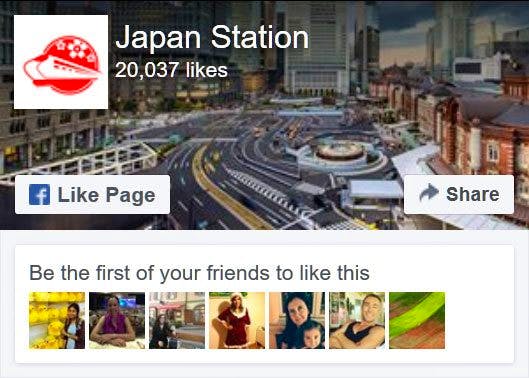Nakamise is the most famous shopping street in Asakusa. The street runs for 250 meters on the main approach to Sensoji Temple and is lined on both sides with shops selling traditional souvenirs, snacks, and sweets.

A bird’s eye view of Asakusa’s Nakamise shopping street
This street is actually on temple property and so it starts and ends with a temple gate: at the southern end is the outer gate of Kaminarimon, and at the northern end is the inner gate of Hozomon. Between these two gates are 89 shops, with 54 shops on the east side, and 35 shops on the west. “Nakamise” is a traditional name given to shopping streets on the grounds of temples or shrines, so this is not the only “Nakamise” in Japan, but it is one of the oldest and most famous.
The History of Nakamise
Asakusa’s Nakamise shopping street is believed to have got its start sometime between the late 17th and early 18th centuries when local people in Asakusa were granted permission to open shops on the temple grounds. In return, the new shopkeepers were expected to perform cleaning services and keep the temple precincts nice and tidy. Already at that time, Sensoji Temple was a popular center of pilgrimage, and so the shopkeepers of Nakamise could do a great trade providing food and drink to weary pilgrims. Since that time, the appearance of the street has undergone a number of changes.
In 1885, the street was modernized and the old shops replaced by red brick buildings typical of that era. Sadly these buildings were completely destroyed in the Great Kanto Earthquake of 1923. After that the shops were rebuilt in concrete on two occasions, once after the 1923 earthquake, and then again after the firebombing of World War II. Despite their modern concrete structures, the shops today have a traditional appearance, and are brightly decorated with hanging lanterns and green tiled rooftops.
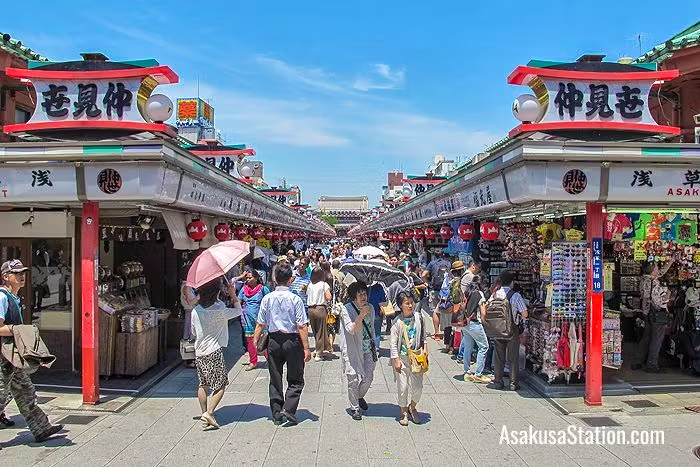
The entrance to Nakamise
Shopping in Nakamise
The shops of Nakamise sell a great variety of specialty street foods and snacks; traditional arts and crafts; clothes and accessories, and all kinds of toys, t-shirts, parasols, dolls, and lanterns. Here are just a few things you might find there.
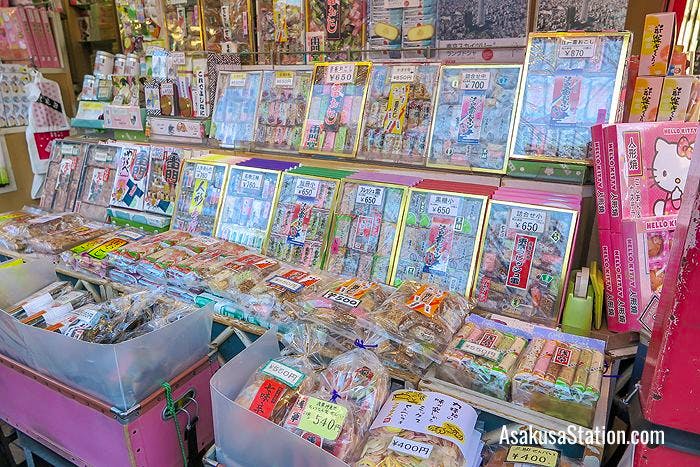
These rice crackers and arare soybean biscuits stay fresh for a long time, so they make the perfect take home souvenir
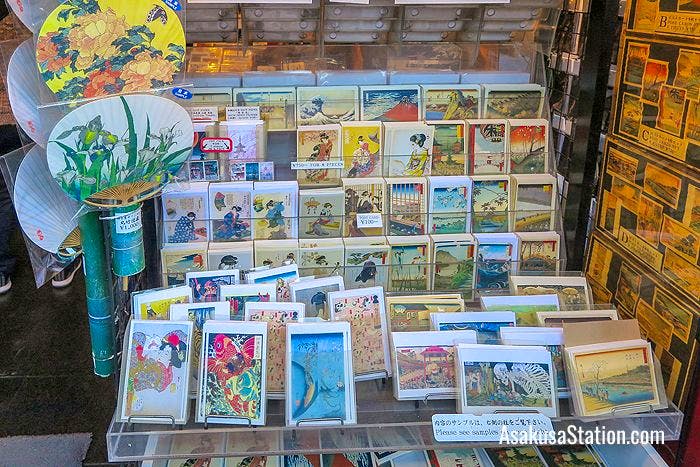
Colorful postcards with woodblock print designs
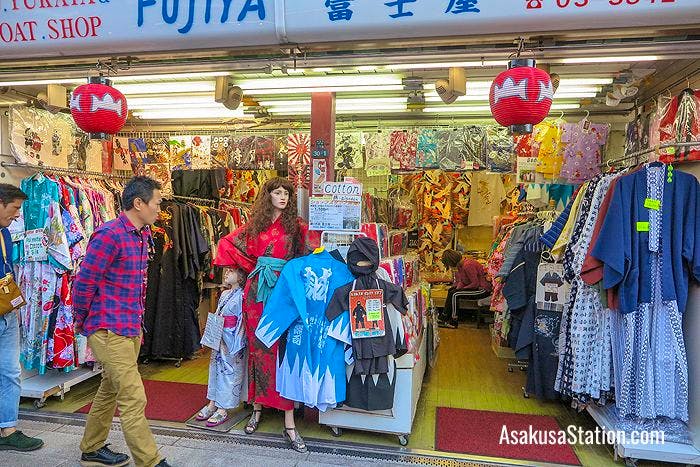
The Fujiya shop sells casual cotton kimonos
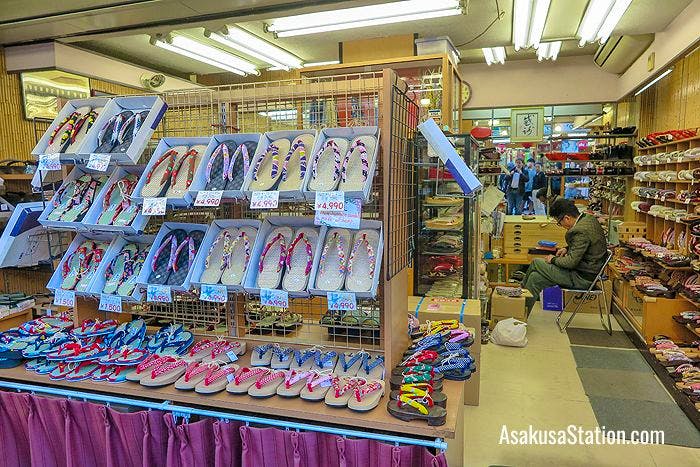
Here you can buy traditional sandals and clogs
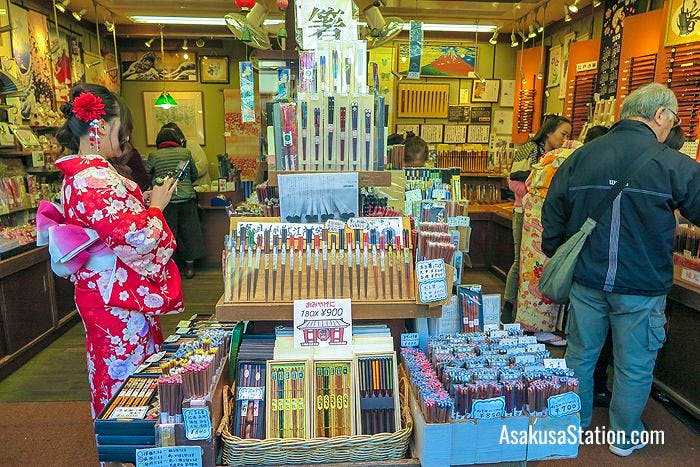
A chopstick specialty shop
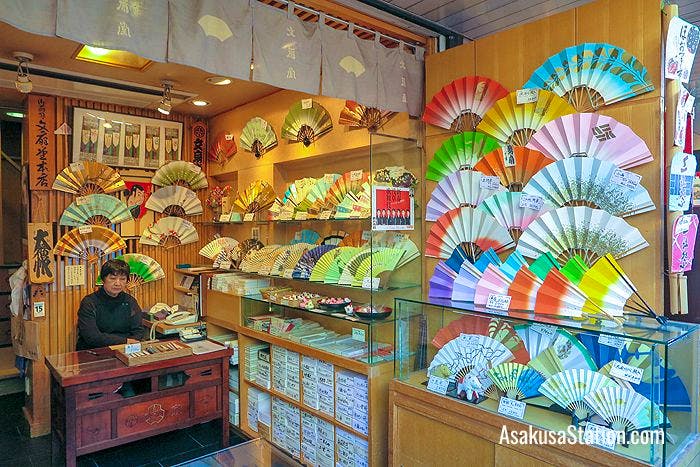
Keep your cool with one of these beautiful fans
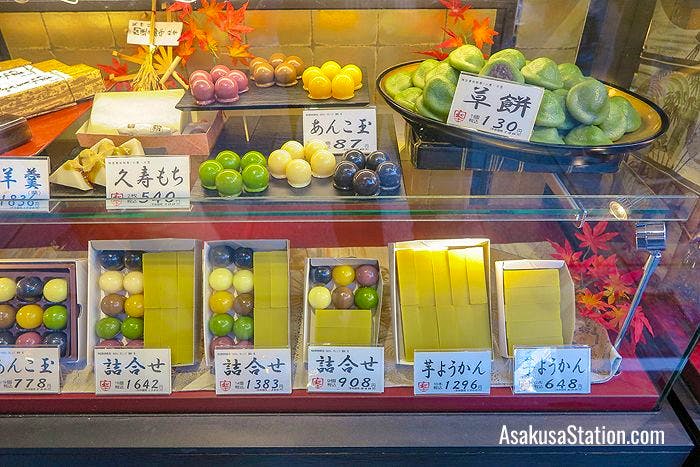
A display of yokan sweets at the Funawa shop
The Funawa shop sells colorful imo yokan sweets made of sweet potato paste, and other types of yokan made of sweet bean paste. Funawa was first established in 1902, and this is one of Asakusa’s most famous sweets.
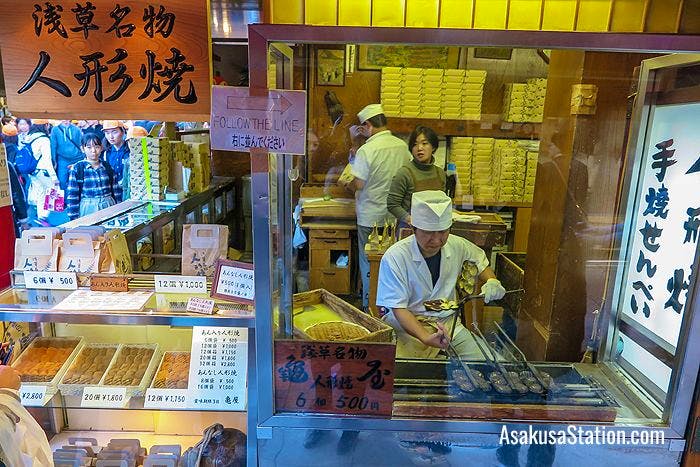
Kimura-ya ningyo-yaki shop
Another popular treat on Nakamise is ningyo-yaki, or “baked doll” cakes, which are simple soft baked sponge cakes filled with sweet bean paste. They come in all kinds of shapes (such as doves, pagodas, or cartoon characters) and you can eat them right away or buy a box-full as souvenirs (they usually stay fresh for a week). One of the most famous ningyo-yaki shops is Kimura-ya, where you can actually watch the ningyo-yaki being baked before buying them.
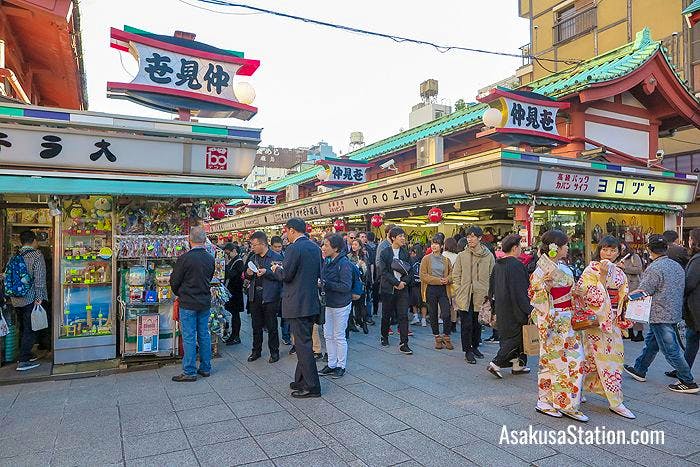
Nakamise can get very crowded during the day
Nakamise is usually packed with tourists so go early in the morning to avoid the crowds. If you find the crowds too overpowering along the main route of Nakamise, then you can walk behind the shops on either side of Nakamise, where it is much quieter. On the outer streets that parallel the main Nakamise street there are plenty of other shops, cafes, and restaurants and they will certainly be glad of your business.
Opening hours vary by shop. Most shops are open from 10:00 to 19:00. Some open as early as 8:00 and some close as late as 20:00.
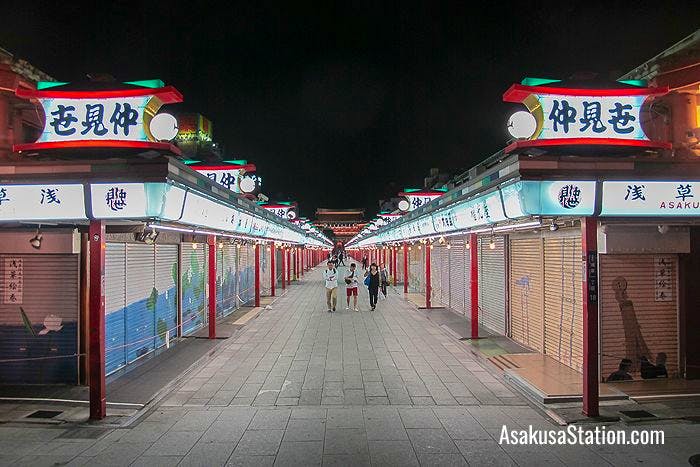
Nakamise at night
Nakamise Shopping Street Location Map
Nakamise shopping street stretches north from the Kaminarimon Gate towards Sensoji Temple. It is a 3- 5 minute walk from the Tobu, Toei, and Tokyo Metro Asakusa stations and about 7 minutes from TX Asakusa Station on the Tsukuba Express Line.
Article by Michael Lambe. Photos by Gongz Photo/Shutterstock.com (1) and Michael Lambe. All rights reserved.
